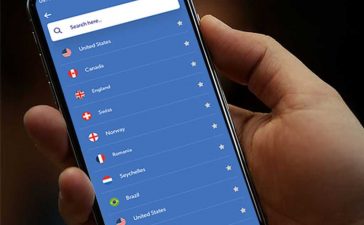The urgency for higher education institutions to integrate and create policies for using AI technology in the classroom is rapidly increasing. Colleges also must adequately account for its impact on their current and future workforce.
I believe that placing people, not technology, at the center of these decisions is how educators should embrace AI, discover new ways of incorporating its capabilities, and use its power to promote equitable student success.
Artificial intelligence, or AI, is a machine-based system that can, for a given set of human-defined objectives, make predictions, recommendations or decisions influencing real or virtual environments. The origins of AI have been traced back to 1950 when Alan Turing published “Computer Machinery and Intelligence,” which proposed a test of machine intelligence called The Imitation Game. However, the term itself was coined by John McCarthy in 1955. Since then, AI research has grown, and the fruits of that labor have evolved into its integration into our everyday lives.
AI is now reshaping how students learn, and its widespread use has created some complexities in education. In late 2023, Educause administered a survey to measure current sentiments within the higher education community related to strategic planning and readiness, policies and procedures, the workforce, and the future of AI in higher education. According to the 2024 Educause AI Landscape Study, “AI is making the most significant impact on policies for teaching and learning, technology, and cybersecurity and data privacy (reported by 95 percent, 79 percent, and 72 percent of respondents, respectively, as ‘already impacted’ or ‘soon to be impacted’).”
Navigating these complexities will not be easy. However, it is necessary. As recommended in the 2023 Artificial Intelligence and the Future of Teaching and Learning report published by the U.S. Department of Education Office of Educational Technology, “educational policy and decision-makers at the local, state, and federal level should use their power to align priorities, educational strategies, and technology adoption decisions to place the academic needs of students ahead of the excitement about emerging AI capabilities.”
As institutions seek guidance on building the infrastructure for AI implantation and use, Elon University in North Carolina has emerged as a leader in the topic. President Connie Ledoux Book, Elon scholar-in-residence Lee Rainie, and professor Divina Frau-Meigs of Sorbonne Nouvelle University in Paris have generated support from more than 140 higher education leaders and scholars from more than 40 countries for their development of six principles that serve as a framework for institutions to take action on artificial intelligence. Interestingly, principal number one is, “People, not technology, must be at the center of our work.”
It’s the approach we are trying to take at the Community College of Aurora. Efforts to revolutionize the student experience have driven faculty and staff to envision new ways of incorporating AI. Bobby Pace, vice president of academic success, shared how the academy moved quickly to assemble an AI task force to develop guidelines to promote equity and inclusion in the classroom: “Over the fall semester, an AI task force from across the academy was formed to develop clear descriptions of when AI could be used and how. The framing of AI as a tool like a calculator or Google before it, rather than as a forbidden technology, allows us to right-frame our instruction within the realities of the world our students will work in and helps us to embrace the technology from a learning perspective rather than a punitive one.”
Outside the classroom, Clair Collins, vice president of enrollment management and pathway success, shared how AI has been incorporated within the enrollment management student experience to support student retention and completion: “CCA has leveraged AI and machine learning in academic advising to break down student momentum indicators by program. This has led to earlier interventions with students and the integration of population health metrics that are easy to digest for both staff and faculty. For the first time in higher education, we can be proactive with current students rather than deploying semester-to-semester interventions based on a previous cohort’s data.”
This deep level of AI integration and intentionality has led to CCA experiencing a 4 percent increase in fall and an 11 percent increase in spring enrollments. Furthermore, our faculty integrating AI into their teaching have reported deeper levels of engagement among their students, leading to improved course success rates. Additional success has been shown by integrating the college’s first multi-language AI chatbot, Professor Fox, which was a cross-college collaboration that significantly improved the college’s website visitor retention and navigation metrics.
As the higher ed marketplace evolves with deeper AI integration, so should the student experience. Doing so will help institutions capture new students and retain current ones, aiding in the efforts to advance equitable student success.











